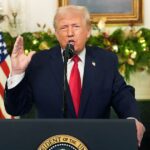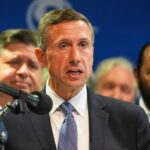
After several months with a high number of job openings in the market, the Labor Department announced that job openings fell in August. Now many are wondering if this could mark a new turn in the American economy.
The number of job openings decreased to 10.1 million, the Bureau of Labor Statistics reported.
That is an estimated 1.1 million drop, making it the lowest number of open jobs since the middle of last year, Reuters reported.
The job openings decline in August alone was also the biggest drop since April 2020, at the beginning of the pandemic, Reuters added.
The numbers of hires, quits and layoffs did not change much in August, however.
Hires remained about the same as in previous months at 6.3 million. Quits came in at about 4.2 million and there were about 1.5 million layoffs and discharges, the BLS report noted.
The sectors that saw the biggest drop in job openings were health care, retail, social assistance and other kinds of services, the BLS reported.
While the job opening decline has specifically hit certain industries, some are taking this as a sign that the U.S. market is beginning to cool off and the economy might be at the beginning of a serious period of weakening, the Wall Street Journal reported.
The flagging job opening numbers is accompanied by continual interest rate hikes that the Federal Reserve has put in place as an attempt to counteract inflation that could be weakening the economy.
Do you think the job market is headed in a bad direction?
Yes: 0% (0 Votes)
No: 0% (0 Votes)
Inflation is still very high, at an annual rate of 8.3 percent for the 12-month period that ended in August 2022, the U.S. Inflation Calculator reported.
However, some speculate that the Fed will actually welcome this cool-off as a sign that the economy is re-stabilizing and taking hiring pressure and worker shortages off of employers.
“This helps bring that inflation pressure down and reassures the Fed that maybe there is a road out of this without dramatically pushing up the unemployment rate,” LHMeyer economist Derek Tang told the Associated Press.
But while the Fed may not see the job opening fall as a bad sign, other economists say it could still be a sign of coming problems.
“The Fed will welcome this apparent decline in excess demand for labor in the hope that it eases wage pressures,” Brean Capital senior economic advisor Conrad DeQuadros told Reuters.
“However, the ratio of job openings to unemployment in August was at about the same level as seen in the fourth quarter of 2021, which at that time was a record high,” DeQuadros pointed out.
One positive factor for the falling numbers, however, is that the labor market has seemingly recovered from the blows of the pandemic.
The labor market recovery throughout the summer of 2022 drove down the number of people enrolling for unemployment assistance to pre-pandemic numbers, and companies are hiring and keeping employees, the Journal reported.
According to Aaron Terrazas, the chief economist at the job website Glassdoor, the labor market remained strong throughout the summer, but as winter comes that may change, as August’s numbers already seem to indicate.
“It’s still going hot. It’s an extended summer, but everyone is waiting for winter to come,” Terrazas told the Journal.
Economists have noted that this change in the market is not immediately cataclysmic, but it does seem to mark a turning point for the economy.
“The heat of the labor market is slowly coming down to a slow boil as demand for hiring new workers fades,” Nick Bunker, head of economic research at Indeed Hiring Lab told Reuters.
“This is still very much a job seekers’ labor market, just one with fewer advantages for workers than a few months ago,” he added.







